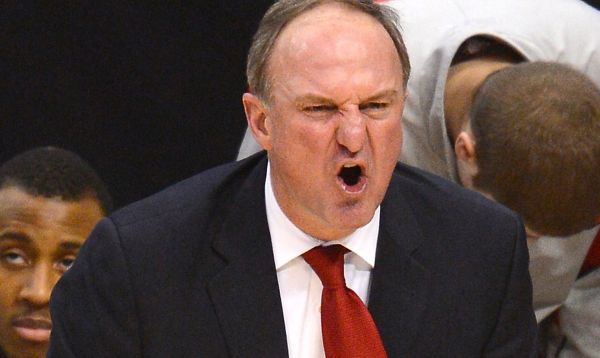Thad Matta Has Tough but Doable Task: Winning with Youth
Posted by Patrick Engel on November 2nd, 2015Thad Matta’s entire career can be summed up in one word — winner. Think of it this way: The 48-year old has won at least 20 games in each of his 15 seasons as a head coach. He’s missed the NCAA tournament only twice, and he ended up as the NIT champion in one of those two years. In the other year — his first season at Ohio State — he took over a team that finished below .500 in Big Ten play and was ineligible for the 2005 postseason and led it to a 20-12 record that included an upset of top-ranked and then-undefeated Illinois on the regular season’s final weekend. Doubt him if you dare.

Thad Matta is a proven winner, but leading a freshmen and sophomore-laden team through the Big Ten is a tough task. (USA TODAY Sports)
While Matta has proven his knack for winning year in and year out, he has a big challenge ahead of him this season. He’s got plenty of talent but not much experience on this year’s team. Seven of Ohio State’s scholarship players have never played a minute of college basketball in Columbus; six are freshmen; one is a junior. There are no seniors. Departed players from last year’s Round of 32 squad accounted for 65 percent of the scoring, 87 percent of the assists and 61 percent of the rebounding. The bottom line is that Matta will have to rely on a group of freshmen and sophomores to replace star guard D’Angelo Russell and four seniors.
Russell is the glaring loss. The wunderkind freshman accounted for 26 percent of the team’s scoring, took 26 percent of the shots and logged a usage rate of 30.2 percent, per KenPom. He was the go-to scorer for a team that didn’t have a consistent second scoring option and really hasn’t since the Jared Sullinger/William Buford days. The good news for Ohio State is that beside Russell (and Shannon Scott’s terrific on-ball defense), no one else did anything completely irreplaceable. No other player averaged more than 10.2 points per game and no departing player had a usage rate higher than Scott’s 21 percent, a relatively average rate.
Enter JaQuan Lyle, A.J. Harris, Austin Grandstaff, Mickey Mitchell, Daniel Giddens, David Bell and Trevor Thompson. Five true freshmen (all four-stars), one redshirt freshman (Bell) and one sophomore transfer (Thompson) will have to grow up quickly and play major roles in a deep Big Ten. No one has to be the second coming of Russell because nobody on the roster has that kind of natural ability. But Matta needs to make sure that his team knows that replacing what’s gone is a group effort — and an accomplishable one, at that. Nine of Ohio State’s first 13 games are against teams rated in the bottom two-thirds of Division I in KenPom‘s preseason rankings, which will give Matta’s freshmen low-pressure situations to get comfortable. The Buckeyes will also play Virginia, Kentucky and Connecticut, three much tougher games where those young players are likely to have some growing pains. The early schedule represents a good mix of easier games and teaching moments for a growing Buckeyes’ team before it reaches the rigors of conference play.
Given Matta’s history of getting good performances from his freshmen, it’s not crazy to expect this year’s group to mimic last season’s results. Ohio State was a solid-but-unspectacular 24-11 (11-7 Big Ten) a year ago. It is reasonable to expect the team to struggle against better teams again (2-8 vs. KenPom top 50 last year), but it should roll through the rest of its non-conference slate, handle most of the lesser Big Ten teams with ease, and steal a win or two away from a ranked team. The league’s improved depth will make for tougher sledding than a season ago, but Ohio State has enough talent and (always) coaching to become a solid bubble team. If that doesn’t occur, Matta will surely treat the nation to a handful of his signature angry faces.









































